

New policies significantly improve attendance
By Lyla Ashkenazie Sophomore Editor
Two policies introduced this year aimed at improving attendance at morning minyan, in class, and at detention have had significant success so far, the administration confirmed. The total number of classes being “cut” is more than 50% lower than last year, and missed minyans have dropped by more than one-third. Attendance at detention has improved significantly as well.
The administration of Flatbush reviews the school’s policies each year to see which needs to be revised or added so that the students can grow and learn to become more personally accountable. Dr. Michael Atlas, Associate Principal of Student Life, said that, “the need for increased accountability was something
that many stakeholders, including parents, faculty, and administration, felt was necessary.”
Last year’s morning minyan attendance needed improvement, and the consequence—early arrival for missing minyan or coming late—did not bring about the school’s desired outcome. Since the start of this year, “after coming late to school three times in one quarter, students have to hand in their phone for each subsequent late,” Dr. Atlas said. This new policy is much more successful than past policies, as there is a 34% increase in minyan attendance, he shared.
Sophomore Jenny Khabih is one of many students whose minyan attendance has improved this year. Khabih voiced that since she does not like the idea of the school taking away her phone, since it isn’t the school’s property to take, she
makes an effort to come to minyan earlier to avoid the consequence.
The second policy administered this year is the suspension of a student for one day if they do not have a reasonable and valid excuse for missing detention. This policy was necessary to instate because “in the past, students would often skip detention and rack up a significantly high number of hours. A suspension for missing detention is standard practice in schools,” Dr. Atlas said. This new policy seems to be even more effective than the minyan policy, as there has been a 51% decline in class cutting, and a 54% increase in detention attendance.
The current policies are going to stay in place for at least the near future, Dr. Atlas confirmed.
Senior residency rule sparks frustration among students
By Freda Cohen
Contributing Writer
The newly implemented senior residency requirement, which mandates all seniors to attend school for at least 48 out of their 56 regular school days this semester, has sparked frustration among students who see it as unnecessary and overly rigid. Many feel that the rule disregards valid reasons for absences and imposes unfair constraints on their schedules.
Sonny Cohen expressed strong opposition to the rule. “I think it’s outrageous. The whole school is very against it. We think it’s absolutely ridiculous that we have to go to school for a certain amount of days,” he said. He highlighted the lack of flexibility in the policy, explaining that even unavoidable absences, such as illness, are penalized. “If you have school but you’re sick and you can’t make minyan, it counts as an absence. You could have all the reasons in the world, but you still have to go to minyan.”
Manya Izkiyayeva, another senior, also criticized the policy, calling it “completely useless.” She believes it forces students to come to school unnecessarily, taking away time they could spend in more meaningful ways. “It just makes us lose time in our day that we could use to be productive and hang out with our friends who are leaving to Israel,” she said.
Susie Masri echoed similar frustrations, arguing that the policy is unfair compared to previous graduating classes. “I think that the senior residency is not very considerate at all because every other grade didn’t have to do this, and they’re not doing all the stuff for our grade that everyone else got,” she noted.
The administration has a very different view. “The underlying premise and purpose of the residency policy is that students should be in school,” Rabbi Beyda stated. Senior grade principal Rabbi Skalrin echoed the same idea: “It was based on the idea that we really wanted the seniors to be in school in their last

months here. Their parents pay tuition, and we want them here.”
Addressing the complaints from seniors, Rabbi Skalrin explained, “It’s not random. We saw that a bunch of seniors needed a little extra chizuk, a little extra strengthening to help them come to school on time and be in school every day.”
Nonetheless, many seniors feel that the residency rule is an unnecessary burden, limiting their flexibility and disregarding individual circumstances. With strong opposition from the senior class, many hope the administration will reconsider or adjust the policy to be more accommodating.
The administration gave no indication that the policy will change. “My response to seniors who are complaining is, ‘Why don’t you think it’s important to be in school?’” Rabbi Sklarin said. “The irony is that most of the people who are complaining are people I’m not worried about.”

Faculty now required to learn CPR
By Sophie Cattan Contributing Writer
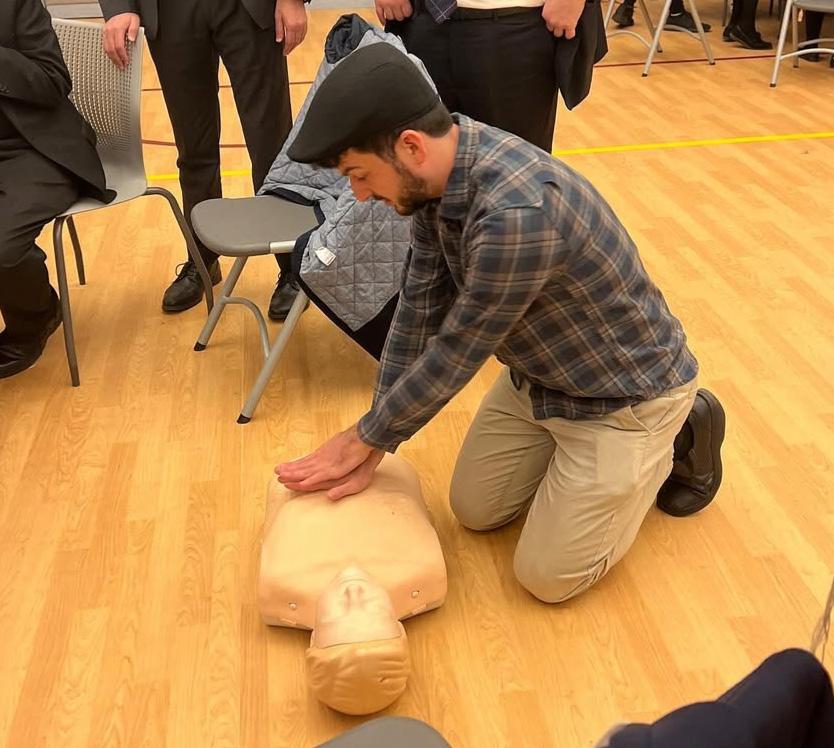
After years of requiring seniors to learn cardiopulmonary resuscitation (CPR), the Yeshivah has now extended that requirement to the entire faculty as well.
Last semester, an incident occurred in which a beloved faculty member in our elementary school needed immediate CPR during a staff meeting. Thankfully, this incident took place in an environment where there were others available to help. Rabbi Benhamu, Judaic Studies teacher at YOF middle school, quickly responded and performed CPR until Haztolah arrived. While situations like this happen rarely, CPR is an essential skill in unexpected circumstances like these, should they arise.
CPR instruction for the high school staff was offered on three different dates in January and February. Although these sessions were both expensive for the school and time-consuming for the faculty, Rabbi Galpert emphasized, “We believe it is a worthwhile investment in saving lives.”
He confirmed that all faculty members are now trained to assist in emergencies, and that they will continue to evaluate and update training as necessary. Moving forward, any new staff hired next year will be required to complete certification.
The episode that occurred in the elementary school was a rare but not isolated event. English department chair Ms. Bloom believes that teachers learning CPR and first aid is essential. She recalled a moment when a girl collapsed in the bathroom; Ms. Bloom remained calm
continued on page 6

The and prestige of being a Flatbush honors student pressure
By Olivia Shamah Junior Editor
One sunny August afternoon, rising junior Sarah Kezra had just arrived home from her summer in Israel when she received a text from her friend, asking her if she’d received an email from Dr. Atlas. The email informed her that she would no longer be in honors classes the following year. Kezra checked her inbox, and sure enough, the email was there.
This news came as a shock to Kezra, who had been in honors classes since second grade. Adjusting to a nonhonors environment would be like moving to a new planet. All she had ever known was honors; most of her friends were in honors, and she was used to the fastpaced and competitive environment that the other classes lacked.
At Flatbush, honors is highly valued by students, faculty, and parents alike. The rigorous academic and social environment provides a pathway for students who can handle more advanced coursework, which also appeals to prospective students who may be interested in the prestige that comes with the “H” on the transcript.
Rabbi Galpert shared that one of the main goals of the honors classes is for students to be challenged more academically, despite maintaining the same core curriculum. “In each course,
the teachers are teaching possibly more, and more in-depth, whether it be more in breadth or in depth of the material,” he explained.
As expected, honors classes are just as difficult to stay in as they are to get into. Students are required to maintain a GPA of 90 or higher, which is the single most important criterion for admission to honors. Behavior and participation are also taken into account when honors placement is decided, according to Rabbi Galpert.
However, the most different aspect of honors classes compared to nonhonors classes is arguably the environment. “You learn the same thing; it’s the same curriculum with the same books, but the environment is different. The [nonhonors] classes move slower, and there’s more ruckus,” Kezra explained.
Similarly, teaching the two different types of classes is an immensely different experience. Judaic Studies teacher Ms. Annie Savdie observed that her goals when teaching the two classes differ, as she strives to challenge her honors classes while motivating her nonhonors classes to “put in their full efforts.”
Honors students are also typically more competitive and driven than nonhonors, but the added competition isn’t always beneficial. “Some competition is definitely good, but the need to always be the perfect 100 student can make students extra anxious,” Ms. Savdie shared.
The pressure that is felt by honors students to do well is significant. For students like Kelly Fatiha, time management is one of her biggest challenges, and her classmate Rachael Kopylov struggles with managing her work in AP Physics, a rigorous and prestigious course that is available only to juniors who are in honors.
However, stamina and managing stress is also a skill that students can obtain to thrive in honors. “School-related pressure used to affect my mental health, but now I’ve learned to deal with it,” Kopylov shared.
Despite its shortcomings, honors students are at an advantage for colleges, being that they are able to take advanced courses at an earlier grade, and more rigorous courses in general. According to director of college guidance Ms. Emily Mottahedeh, academic rigor is the most important factor in college applications, and the main advantage that honors students have is to be able to take rigorous AP classes earlier, and therefore have access to more of these classes. Even though there are other parts of college applications, like personal essays and extracurricular activities, Ms. Mottahedeh emphasized that “there’s nothing else that can supplement academic success and academic rigor.”
Faculty Freshman: Mr. Jacques Douek
By Joseph Shamayev
Contributing Writer
Mr. Jacques Douek has always been great at math, so after graduating from NYU Stern he chose to spend a gap year teaching math at Yeshivah of Flatbush, his alma mater, before entering the corporate world as a financial analyst.
Douek is passionate about not only learning but also teaching math. “During college, I started tutoring and really enjoyed explaining concepts to students. I always felt good when they understood it,” he said. He decided to take these skills into a classroom, and he really enjoys it. He chose to teach at Flatbush because he attended high school here and is familiar with most of the teachers and dynamics. His older sisters, Rosie and Bella, also attended Flatbush, and his two brothers are students in 10th and 12th grade.
As a teacher who recently finished high school and college, Mr. Douek understands how challenging it can be for students to learn for an entire class period.
He shared, “I remember when I was a student it was tough to sit through forty-five minutes of nonstop math problems.” As a result of this, Douek works to make his classes more engaging by having students come up to the board to solve problems or having debates in class on why their answers are correct and how they derived them.
Besides math, Mr. Douek has a variety of other interests that he enjoys in his free time. One of his recent hobbies is reading, particularly the Harry Potter books and watching the movies. In addition to reading, he also has a strong passion for sports. He enjoys watching football, keeping up with games and participating in fantasy football leagues. Ultimately, Mr. Douek shares a lot of the same interests with the students he teaches.
From his passion for teaching math, Mr. Douek is able to bring enthusiasm to the classroom this year. Unfortunately, he will likely be leaving the school at the end of this year, as he plans to start his job as an analyst at an investment banking firm
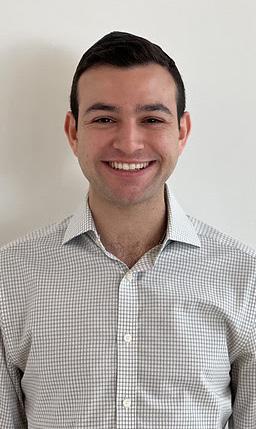
this summer. Even though his time at this school will be short, Mr. Douek will leave a lasting impression on all his students.
Editors-in-Chief: Samantha Ryba, Sylvia Saad
School News Editors: Galiette Mita, Nina Tawil
Religion Editor: Katie Hidary
World News Editor: Victor Shemia
Features Editor: Raquel Gindi
Entertainment Editors: Leah Katash, Caroline Palacci
Fashion Editors: Irene Cohen, Rachael Kopylov
Fun & Games Editor: Margaux Lincer
Sports Editor: Colette Chehova
Business Editor: Emily Tarrab
Photography Editor: Bobbi Salama
Junior Editors: Elliot Cohen, Salomon Dayan, Yvette Dweck, Lili Hanan, Emme Nidam, Olivia Shamah, Olivia Shamayeva
Sophomore Editors: Lyla Ashkenazie, Shlomo Lahav, Sylvia Mizrahi
Design: Carolina Cohen
Faculty Adviser: Adam Hofstetter
Is Ave J the new Ave U?
Not just yet OPINION

By Margaux Lincer Fun & Games Editor
Avenue J has long been a central area for the Brooklyn Jewish community, with a majority of Ashkenazi establishments shaping its commercial scene. However, in recent months, a shift has been taking place. Many of these traditionally Ashkenazi-owned stores are being replaced with businesses owned by members of the Syrian Jewish Community. It raises a big question: is Avenue J becoming the next Avenue U?
At first glance, the comparison makes sense. Popular Syrian-loved businesses like Jus by Julie, Sheer Bliss, and Bloom Bar have recently set up shop on Avenue J. But, despite the growing presence of Syrian establishments, Avenue J lacks a crucial element that makes Avenue U what it is: proximity to its residents.
The core of Avenue U’s business district lies between East 5th and East 2nd, blocks where many Syrian families live. A quick one-minute walk from their door and they can be standing inside of Ouri’s, a neighborhood staple. Avenue J, on the other hand, has its residential base between East 10th and East 7th, while new hotspots like Jus are located across Coney Island Ave. The result? Unlike Avenue U, where residents can simply step out of their homes and into their favorite stores, shopping on Avenue J often requires a car ride, even for those who live close by.
And, of course, there’s one more undeniable factor: Avenue J doesn’t have Ouri’s, a defining pillar of Avenue U’s food scene. While Avenue J is undoubtedly evolving and becoming a more Syrian-friendly shopping district, it will never fully replace Avenue U’s deep-rooted convenience. Instead, it’s carving out its own niche—a quieter, less congested alternative that remains close to many Syrian staples. Unlike Avenue U, where shoppers can step out of their homes and into bustling storefronts, Avenue J provides a more residential atmosphere while still having an increasing number of familiar businesses, making it a unique blend of convenience and community.
High School Administration
Rabbi Joseph Beyda, Head of School
Ms. Esther Hidary, Associate Principal
Rabbi Yigal Sklarin, Associate Principal
Dr. Michael Atlas, Associate Principal
Rabbi David Galpert, Assistant Principal

The Phoenix Staff
Main office becomes student hangout
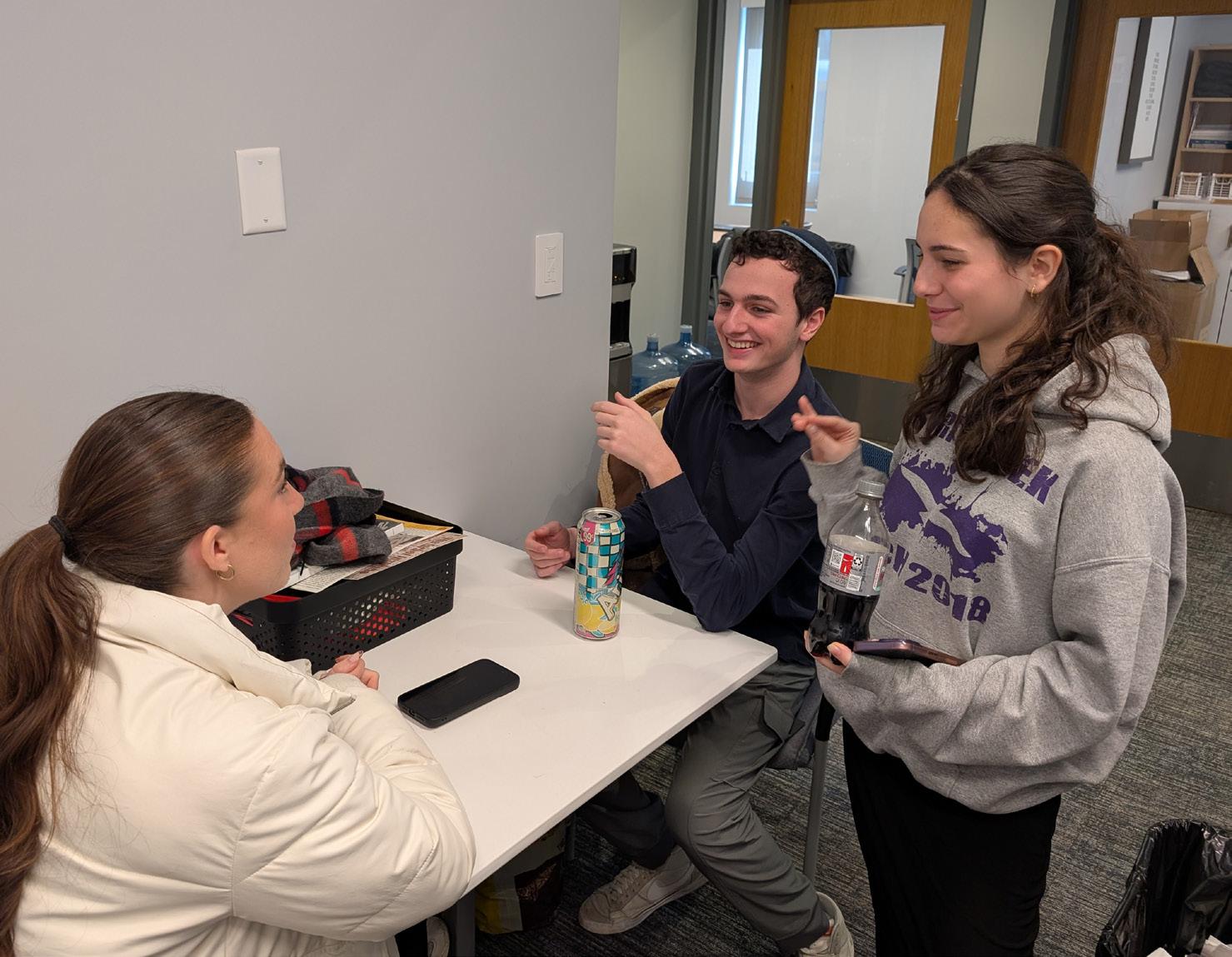
By Olivia Shamah Junior Editor
Students have taken the Main Office by storm recently, turning it from purely a place of work into a place to unwind, connect with the school staff, get work done, or even just to hang out with friends in a secluded and peaceful area.
Students can frequently be found in the common area of the office, working or talking with friends and office staff. “I’m always in the office,” shared junior Emily Leibowitz. “Whenever I have the time to sit and take a break, those chairs are the first place I am.”
In addition to being a place of work, the office provides a calm, private, and quiet environment to get away from the chaos of busier areas like the Commons or Crawford’s. It’s become a popular place for students to go during free periods and lunch when they need a break or just a more private place to hang out.
Marketing coordinator Michelle Kopylov said she enjoys the students’ presence, and it even helps her with her work. “I think it’s fun, and it livens it up a little bit and breaks up the day,” she said. “It also helps me in my role as the marketing coordinator for the students to be talking about things that they’re doing in
school.”
The office staff has always been welcoming to students, providing them with candy and tea courtesy of Ms. Alyssa Shamah, not to mention warm conversation and company. “The office staff are always fun to chat with,” Leibowitz remarked.
However, it hasn’t always been this way. Before the construction of the new office, the original school office was rarely visited by students unless they had been called there. “When I went to school here, the office was a very different place, and you never went to the office for fun. You only went if you were in trouble,” Ms. Kopylov commented.
The new office’s open-door policy has also strengthened the bond between students and faculty. It provides a place for students to catch up with their teachers and other faculty members outside the classroom, as the warm environment can make student-faculty interactions feel less intimidating. “It’s very special to be able to have that relationship with the administrators and the people in the office, and it’s a great way for them to get to know [the students] over the four years and have a lasting bond when [they] graduate,” Ms. Kopylov remarked.
Non-Jewish teachers’ experience in Yeshivah
By Yvette Dweck Junior Editor
What’s it like to be a non-Jewish teacher in a school full of Jews? For members of the faculty who are not Jewish, teaching at a yeshivah can be a bit of a culture shock, but also eye-opening and educational.
Coach Gus Kennedy said, “Initially, I was concerned about respectfully navigating the intersection of my own beliefs with the students’ religious beliefs and culture. However, it quickly became clear that open communication and setting healthy boundaries were key.”
Kennedy explained that Flatbush differed from his previous teaching experiences and work environments in two main areas: diversity and community. He sees a lack of diversity in the school but also recognizes how students’ and faculty’s similarities are what build such a strong community within the school. What stuck out to him specifically in Flatbush was students’ compassion for each other. “It truly feels like a family,” Kennedy remarked.
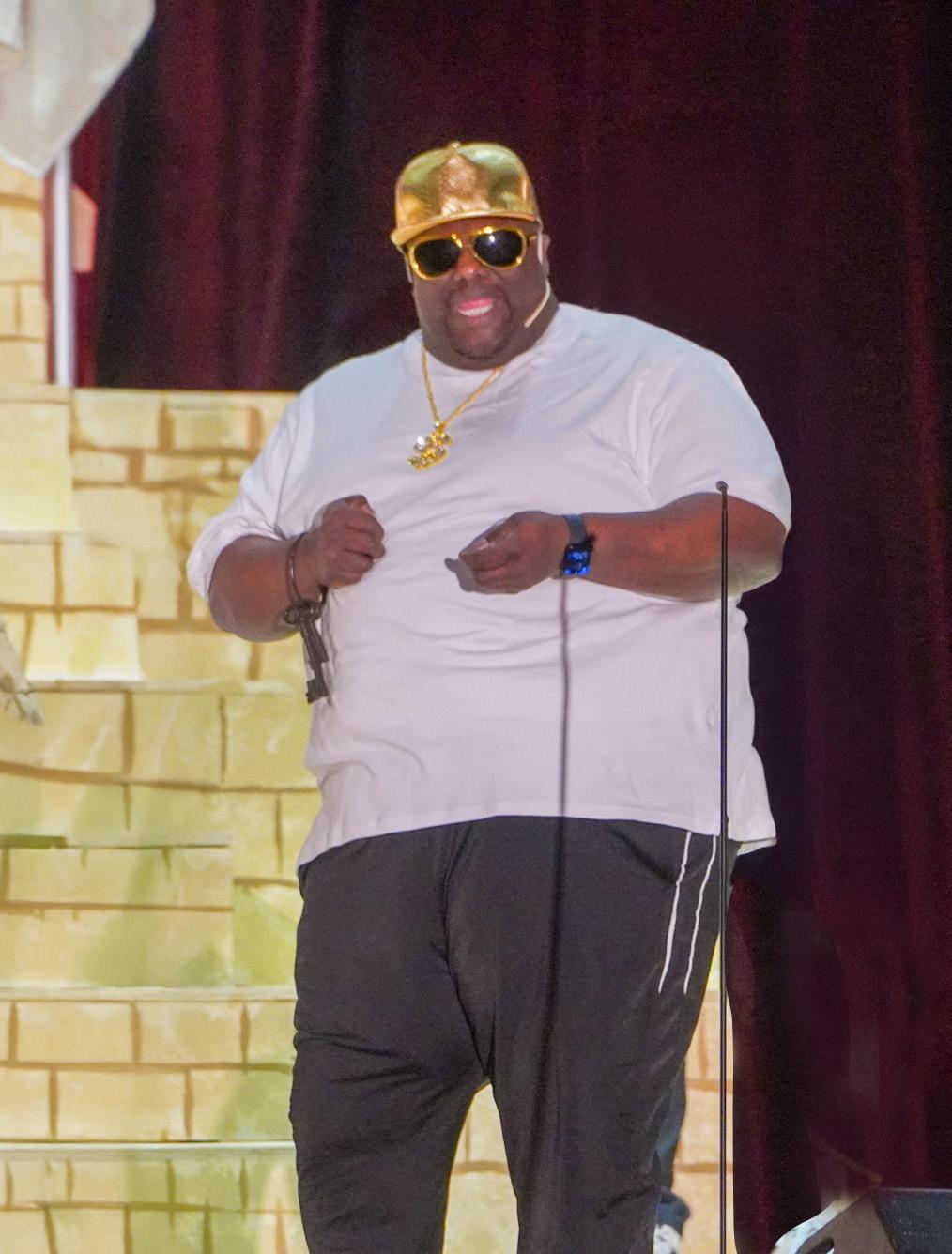
Before teaching AP Physics to seniors at Flatbush, Ms. Irene Pease worked with both middle and high school students at different schools. At these previous schools, she said that she observed a big change that occurs between middle school and high school. She explained that middle schoolers generally asked more thought-provoking and creative questions. They weren’t concerned with others’ opinions on their questions, and simply inquired about what was on their mind. On the other hand, while working with high schoolers, Ms. Pease recognized that these students were more reserved and self-aware about the questions they asked. High schoolers were generally more concerned about their classmates’ opinions of them and therefore tended to hold back.
Ms. Pease was prepared for this before she started working in Flatbush, but when she started teaching physics here,
she realized that Flatbush students were the exception to her observations. “I was pleasantly surprised by the students at Flatbush: they ask so many probing questions during lessons, which I really appreciate.” She continued, “I mentioned it to my supervisor at the time, and she explained it was at least in part due to the religious studies curriculum—students are trained in their study to seek deeper meaning to fully understand the roots of a topic.” Ms. Pease also emphasized the importance of seeking understanding for STEM education.
Understanding Jewish customs and terms can be difficult, but Ms. Pease explained how supportive and helpful the administration, faculty, and students have been in explaining Jewish traditions. “I did spend a bit of time on Google as well,” she said.
Dr. Price, an economics teacher, expressed his appreciation for his students’ open mindedness. “What surprised me was how students at Flatbush were always approaching things with an open mind. The students and the staff, they are very friendly, cooperating, and welcoming,” concluded Dr. Price.
More YOF students coming from Mazel
By Samantha Ryba Editor-in-Chief
It’s no secret—if you’ve been paying attention while walking through the hallways of school, it’s clear that the student body has become more diverse than in previous years, attracting students from a variety of different schools, specifically from Mazel Day School. In fact, the freshman grade consists of 19 students from Mazel—more than 60% of the Mazel graduating class—compared to just 3 students in the senior grade.
So, what has ignited this surge?
In 2021, when the current seniors graduated from elementary school, Mazel’s eighth grade consisted of only 19 students. With limited options for local schools that offer both strong Jewish and secular educations, many students
naturally gravitated toward Yeshivah of Flatbush. The admissions team at YOF worked hard to foster a strong connection with Mazel’s administration, which in turn attracted even more students the following year. As Mazel’s graduating class size increased—its latest class consisted of about 30 students—the number of students enrolling in Flatbush also grew, especially as they received compelling advice from Mazel alumni who had successfully integrated into the YOF community.
“I think Flatbush has always been a school for a lot of different people in a lot of different ways,” Ms. Esther Hidary explained. “We’re very large, so there are a lot of ways you can fit into Flatbush. Once one or two kids came here and liked it, the next eighth grade had a relationship with those students, and it went from there,” she remarked.
Generally, students from Mazel Day School perform exceptionally well in math, science, and English, making them strong candidates for YOF’s academically rigorous curriculum. They also have a strong Judaic studies background. However, as Eliana Ashurov, Flatbush senior and Mazel alumna, explained, “We have a rigorous curriculum in Tanakh and Halakhah, though they were mostly taught in English, as Mazel is a school for families of Russian refugees.” As a result, students from Mazel often need to put in extra effort to strengthen their Hebrew language skills for Flatbush.
This challenge, though, isn’t unique to Mazel students. Any YOF student who struggles with Hebrew can be evaluated and receive help from the school, especially in freshman year.
“It’s not an accommodation just for
Mazel,” Ms. Hidary clarified. “Every student who applies gets evaluated for their Hebrew level. If they need extra support, they have to commit to private tutoring twice a week, and we monitor their progress closely.”
With Mazel High School set to open next year, the Flatbush admissions team is unsure how the school’s demographics will shift. However, they are confident that Flatbush will remain an attractive option for students from Mazel and several other schools. “We will always keep trying to fulfill our mission and offer a great Yeshivah experience,” Ms. Hidary said. “Whoever is attracted to that is attracted to that, and we’ll go from there.”
Kennedy appeared in the Hebrew Play
Juniors in the office during lunch
Fear of flying: Media attention on plane crashes raises questions on airline safety

By Victor Shemia World News Editor
For nearly a century, flying has been a regular mode of transportation, but flying’s safety has recently come under question after several deadly incidents. Recently, plane crashes, flying errors, and malfunctions have been all over the news, shocking the world with their eerie frequency.
Within just two weeks, four fatal plane accidents occurred, the most notable being the midair collision between an American Airlines flight and a Black Hawk helicopter over the Potomac River in Washington, DC. The crash killed all 67 people aboard both aircrafts. An accident of this magnitude hadn’t been seen in the United States since 2001.
Following this came another notable accident; a medical plane crash that originated from Mexico. On January 31, the relatively small plane caused a sizable impact as it plummeted onto a roadway in Philadelphia, killing everyone on board, along with gravely injuring many people on the ground, resulting in seven fatalities, and 24 severe injuries.
Then on February 6, a small commuter plane disappeared en route to Nome, Alaska, and was found the next day in the Bering Sea, with all 10 passengers confirmed to be dead. Sadly this wasn’t the last of them, as a deadly technical error took place at Scottsdale Airport, where a plane swerved off the runway and collided with another plane, resulting in one fatality and three injuries. And earlier this week, a Delta flight flipped upside down while landing in Toronto; everybody survived.
Considering all of these tragic incidents, there is a blaring question that demands to be answered: “Is flying still safe?” Although there are many factors contributing to such disasters, there have been massive errors on many fronts that surely contribute to these accidents occurring. The majority of these errors are technical, meaning that despite popular belief, these accidents are often beyond the pilot’s control.
For example, there has been a spike in quality issues in planes, especially those manufactured by Boeing. Boeing has been under fire for the past few years for its questionable practices and build qual-
ity. Acts of negligence such as failure to inform pilots about safety systems, along with cutting corners in the assembly process leading to improperly installed parts, have to come to light. Due to this, the FAA along with other aviation organizations
have placed a heavy amount of scrutiny and criticism on the company, demanding a change in their safety protocols.
The planes themselves aren’t solely to blame for recent crashes, as officials claim that the air traffic control system is overtaxed and understaffed, leading to many preventable errors occurring in airports throughout the country. These critically low staffing numbers cause strain on many different facets of flying safety and management. For example, during the crash in DC, a single air traffic controller was managing both flights simultaneously, which is quite abnormal, as there are typically different controllers for airplanes and helicopters.
Despite all of these recent issues with aviation, the verdict remains relatively the same: flying is still one of the most safe and controlled forms of transportation. In the past 10 years, performance in safety has increased by a whopping 61% as more advanced technology and training exercises have been brought into practice. The odds of a fatality in a plane crash is nearly 1 in 11 million, which is exceptionally lower than car accidents, which is 1 in 93.
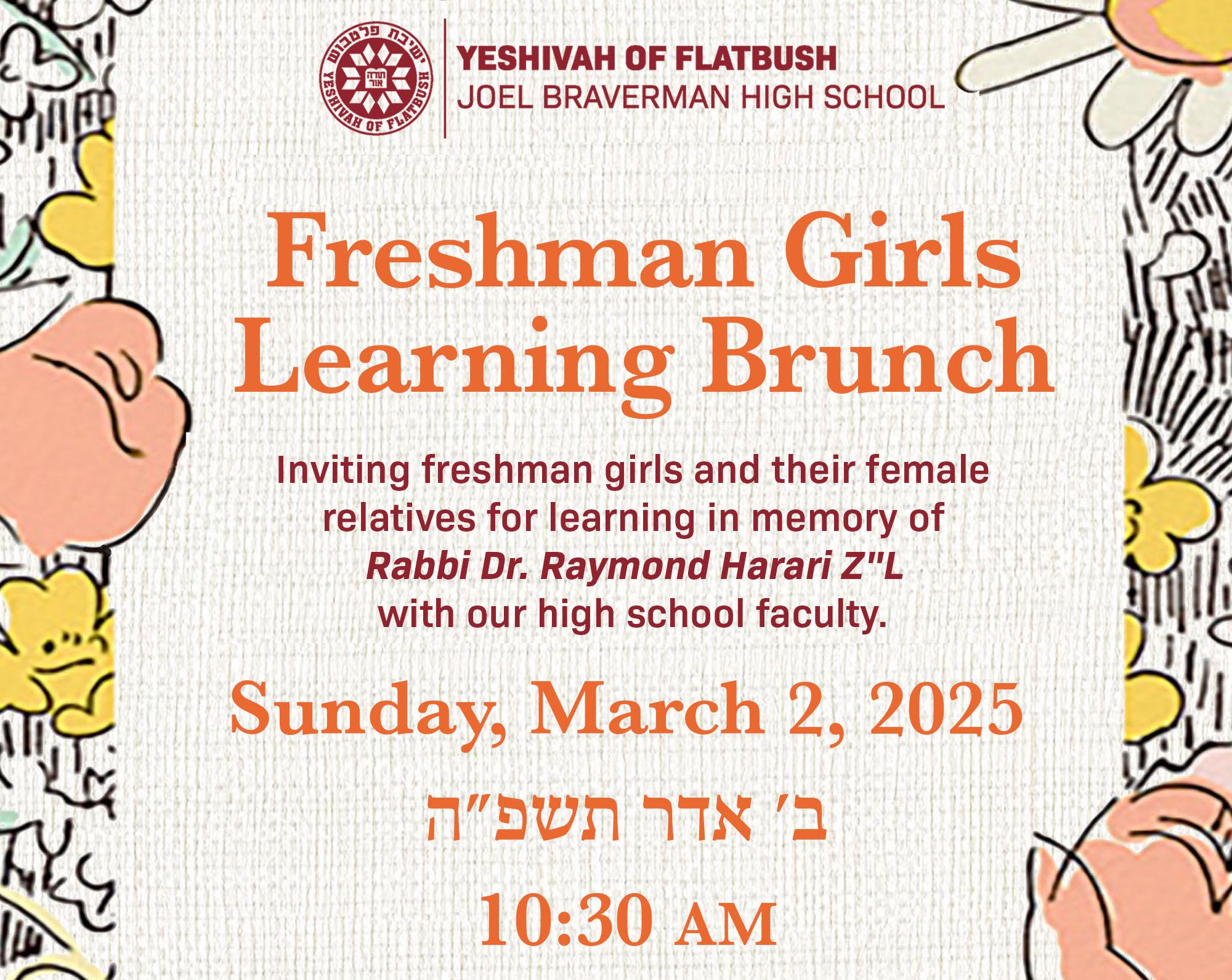
Tetris may help relieve PTSD
By Ralph Bakst
Contributing Writer
Science in English
Post-traumatic stress disorder (PTSD) affects millions of people who have experienced trauma, leading to symptoms like anxiety, insomnia, and flashbacks. These debilitating symptoms can disrupt daily life, making it difficult to function normally. While therapy and medication are the most common treatments, researchers have discovered an unexpected way to help—playing Tetris. Studies suggest that this classic puzzle game, when played soon after a traumatic event, can reduce distressing memories and lower the risk of future PTSD symptoms— almost like clearing out mental clutter before it stacks up too high.
PTSD develops when the brain stores traumatic memories in a way that causes them to resurface repeatedly. This happens because trauma strengthens certain neural pathways and con-
nections in the brain, making distressing memories more persistent and recurrent. Over time, these reinforced pathways make it harder for the brain to process and move past the trauma.
However, engaging in activities like playing Tetris can help weaken these connections by redirecting neural activity and promoting the growth of alternative pathways, reducing the impact of traumatic memories. Researchers at the University of Oxford found that Tetris can disrupt this process. Since the game requires players to focus on fitting shapes together, it occupies the brain’s visual processing system, also used to store traumatic memories. This reduces the brain’s ability to reinforce those memories, making them less likely to cause flashbacks.
Various studies have explored the connection between Tetris and trauma memory processing, demonstrating its effectiveness in real-life situations. In one study, participants who played
Tetris within six hours of seeing distressing images had fewer flashbacks in the following days compared to those who did other tasks. Other studies have shown similar results in real-life trauma cases, including hospital patients and people affected by natural disasters.
Hospitals like Uppsala University Hospital, a leading medical center in Sweden known for its advanced research in mental health, have begun exploring how Tetris can help trauma patients. In a study conducted by researchers at Uppsala University, healthcare workers who played Tetris after distressing experiences reported fewer PTSD symptoms. Since it’s easy to access, Tetris could provide immediate relief to those who don’t have quick access to mental health care. Therapists are also studying whether Tetris and similar games could be used alongside traditional PTSD treatments to improve recovery

outcomes.
While Tetris shows potential as a simple way to reduce PTSD symptoms, it’s not a complete solution. Researchers are still studying how long the effects last and how best to use the game as part of a larger treatment plan. However, the fact that such a basic and familiar game can have a real impact on mental health is an exciting development and proof that sometimes the best way to heal is to keep things in line and avoid mental overload.
Rescue workers at the Potomac crash site
What’s the deal (הקסע)

By Shirel Razabi Contributing Writer
D’var Torah: Is ‘an eye for an eye’ still relevant?
By Eddie Saff Contributing Writer
This week’s parashah takes place after Matan Torah and the Ten Commandments and discusses some fundamental laws that shape B’nai Yisrael. One of the most well-known concepts in Mishpatim is “Soul for a soul, eye for an eye, tooth for a tooth, etc.” (Shemot 21: 23-25).
The rabbis of the Gemara interpret this to mean the value for the inflicted limb. The updated version of the “an eye for an eye” is “the value of an eye for the value of an eye” (Bava Kamma 84a). This interpretation establishes that the victim’s pain will be returned to the perpetrator, but in the form of payment.
Rabbenu Chananel defends the Gemara’s interpretation and expands on its reasoning. If we look at the face value of the rule, we find there are many problems with the “eye for an eye” approach. One must take all of the possible circumstances and less-frequent cases into consideration. For example, if a person with two healthy eyes were to gouge the eye of a single-eyed individual, making him blind, would it be fair to only gouge a single eye from the perpetrator as punishment? Or, in a more common case, there is a possibility the perpetrator will die from the gouging done to him. The possibilities of error are endless and there are too many factors that must be taken into consideration to inflict the perpetrator properly.
The main issue with using the “eye for an eye” approach is that it is nearly impossible to measure pain, let alone
Alum in Israel: Paulette Saada
By Katie Hidary Religion Editor
Paulette Saada (HS ’24), is currently spending her year in Shaalvim for Women, a seminary in Israel. Saada explained that one of the main factors that pushed her to spend a gap year in seminary was hearing about all the positive experiences of past Flatbush graduates. She explained how excited she was to have a year filled with both serious learning and fun with friends in the homeland. It was important to Saada to be able to choose what topics she wanted to learn.
Saada would highly recommend going to seminary. “You will never have the chance to experience a year like this ever again. Your year in Israel is time for yourself to learn and grow.” Saada believes

replicate it, meaning that there will always be more or less pain on the perpetrator than the original pain of the victim. This violates the commandment, “just as he had done, so shall be done to him” (Vayikra 24: 19). For this reason, the rabbis use the monetary system to accurately calculate the value. This ensures that the perpetrator receives an equal and proportional sentence.
Today, an eye for an eye is seen as an ancient concept. We may even think of it as irrelevant, but this is not the case. There could be an argument or even a fight, and some form of verbal or physical hate could occur. One may feel the impulse to respond in the same way and double down on their opposition. An insult is a direct hit to one’s character and it is natural to feel the inclination to strike back in a similar fashion. An eye for an eye is a natural and instinctual thought process. Determining the value of an eye, however, is very different. It requires that we remain calm, think critically, and carefully look through our options. Though less natural, it is a more appropriate way to respond to an opposing force.
The reason the rabbis established the value of the pain is not because they were barbaric people who just inflicted pain as a form of revenge; rather, they were calm people who sat down and thought about the best logical thing to do. We too, can do the same. We have more options than we think. It is fine to respond with assertions and feelings, but it is even better to respond with calmness and logic. B’ezrat Hashem, may we act logically and not instinctively!
Flatbush prepared her very well for her time in seminary and feels like she is on a very similar intellectual level as her peers.
She starts her day by praying and eating breakfast, followed by her first class at 9 AM. She switches off between learning in a classroom and independent learning in the Bet Midrash throughout the day. Saada said, “The Shabbats are one of my favorite parts of my year.” She gets to experience living with different people all over the country. Shaalvim offers a Shabbaton once a month, but on all her free weekends, Saada joins friends to experience how other families keep Shabbat in their homes.
Saada emphasized that students applying for seminary should not be stressed about where they will end up. Although it is important to find the right school
for you, every school is incredible, and it is possible to make the best out of wherever you end up. It is also essential to keep in mind that you will make many friends wherever you go. Choosing the same school as your friends should not be your priority. Many people enter seminary with no friends, and everyone enters with the intention to make new ones.
Saada’s favorite part of school is getting to live with her new friends. “Your friends become your family. It’s very fun to be around your friends all the time. I love the time I get to spend with them on break and after our night classes.”
Saada shared that she has learned more about herself then she expected when going into the year. Her time in Israel has also strengthened her values and opinions. “Living in Israel gave me a new and different appreciation for the land that I did not have as intensely before.”
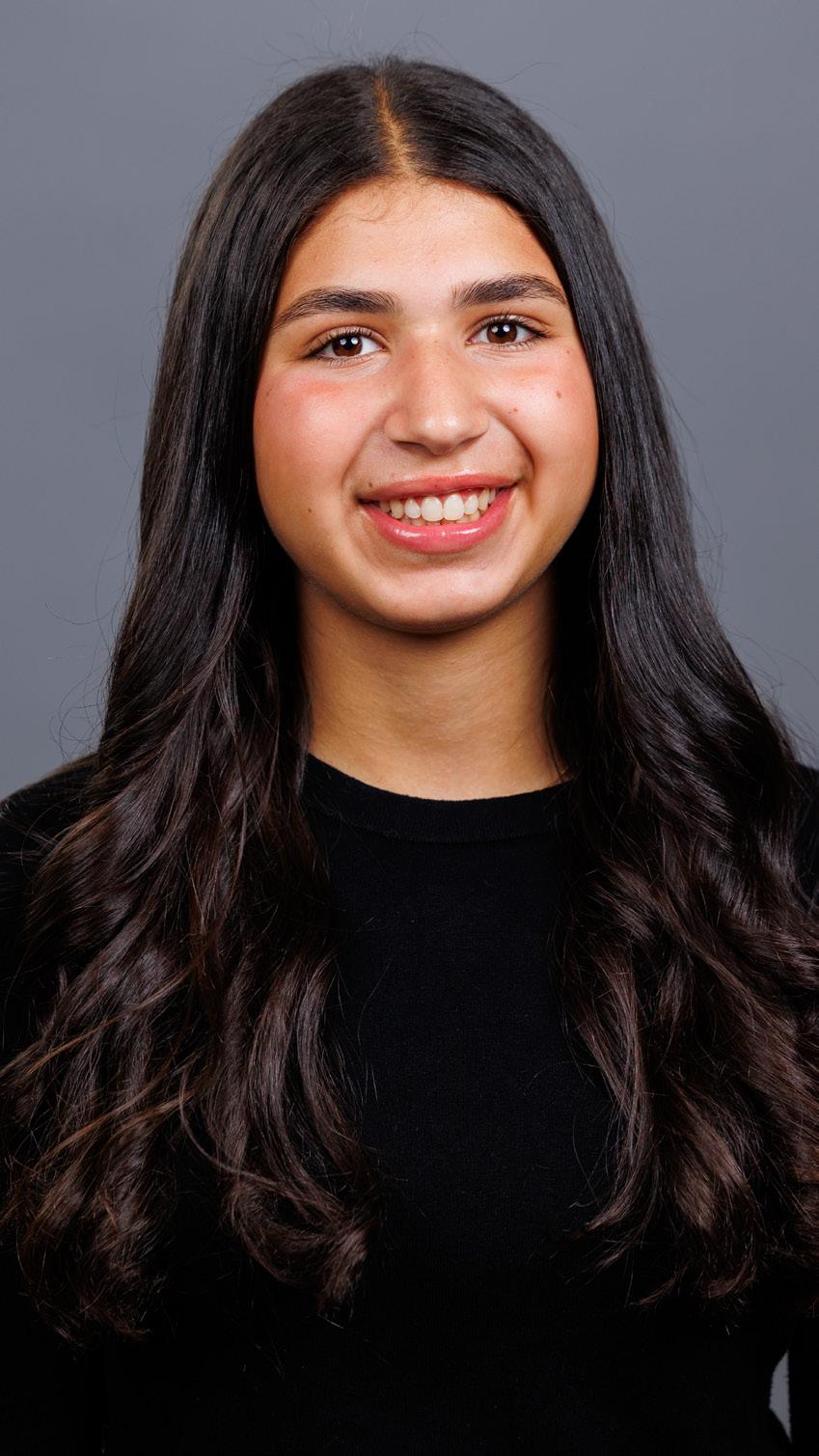
Faculty now required to learn CPR
continued from front page
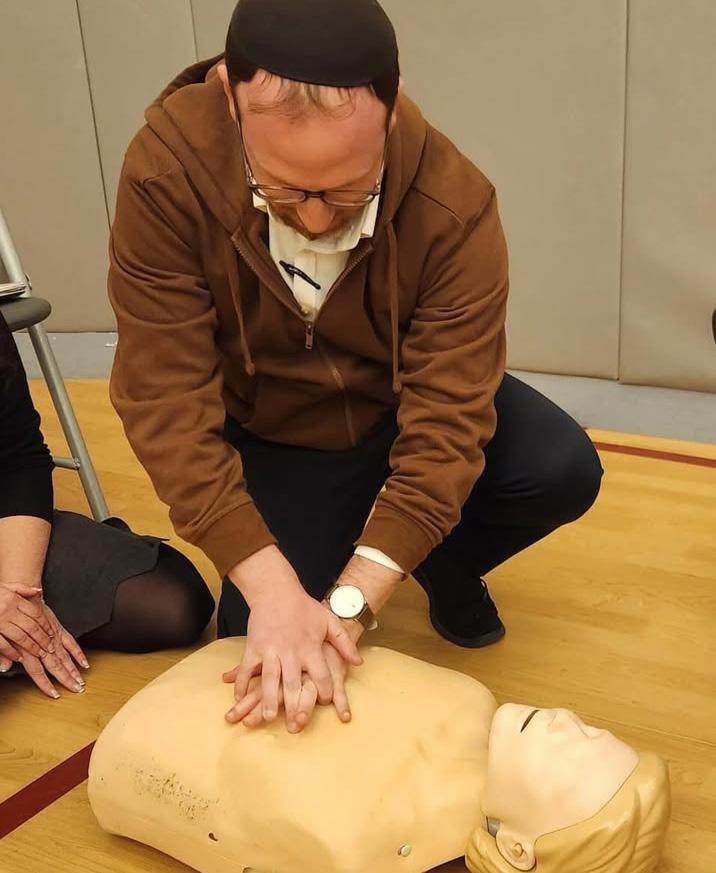
in offering emotional support, but she felt unsure about the necessary steps to take. “I know in the moment I’m calm in terms of holding someone’s hand, but in terms of doing all the stuff I’m anxious and scared, probably still will be,” she admitted. Yet, the ability to act with basic CPR knowledge could have made a crucial difference. As she pointed out, “Any skill you can, why not have it?”
Ms. Bloom added that just as her friend saved a life in a restaurant with the Heimlich maneuver, knowing simple life-saving techniques like CPR or first aid could turn a life-threatening situation into one of survival. “It’s one life, one world saved,” she reflected, empha-
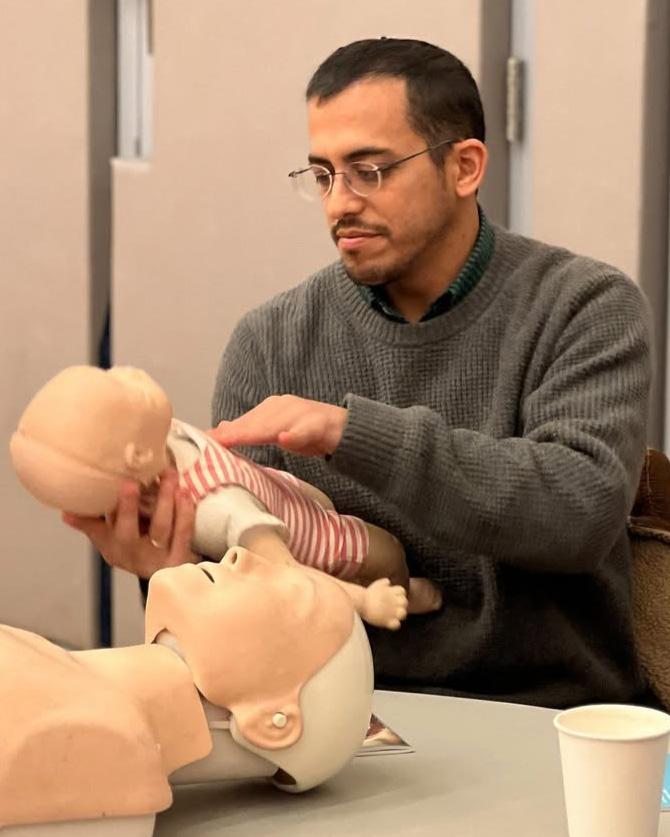
sizing the enormous impact that these skills can have. For teachers, who are sometimes in a position to act quickly in emergencies, having this training can provide the confidence and awareness needed in moments of crisis.
In addition, all graduating students are required by NYS law to complete their certification in order to graduate, which took place this past December. While this serves as a memorable highlight for seniors, it also embedded the idea that cardiac arrest can occur to anyone at any time, and that everyone should be educated in the basic skills to save someone’s life.
DeepSeek spooks Wall Street
continued from page 7
learning and a more efficient use of memory.
However, there are major concerns about the personal data that DeepSeek is collecting. The company stores user data, such as date of birth, text or audio inputs, uploaded files, chat history, and other data. According to its privacy policy, they put this personal user info on servers located in China. But the Chinese government has the power to access company data, which is the same concern raised with TikTok, another company with Chinese ownership that is seen by many Americans as a threat
to national security.
Some Wall Street analysts think the stock selloff is an overreaction: “It’s one thing to train a model for less money, but accommodating the huge demand for the consumption of all this AI technology is still going to require massive amounts of infrastructure,” Adam Crisafulli of VitalKnowledge said. Ultimately, many analysts believe that while DeepSeek’s technology looks promising, it isn’t revolutionary, which suggests that the one-day investment pullout is overblown.




When players leave NY, media is often blamed
continued from page 12 2012, where he batted .314, and tallied 33 big flies. After a stellar 2013, Cano hit free agency, and was expected to resign with the Yankees. Even ESPN, in 2013, wrote that, “Cano seemed to be next in line as the player to wear pinstripes for his entire career, all set to follow the path laid before him by mentors named Jeter, Posada and Rivera.”
However, that offseason, in a deep and slimy whirlpool, Cano signed a huge deal with the Seattle Mariners, who, at the time, offered $240 million for 10 years, which was pretty much unheard of at the time, especially for someone aged 31. Yankee fans were distraught. The farm-grown kid was bought and did not look back. To New Yorkers, he was scum of the earth. Jimmy Fallon even had an episode in which he put up a huge poster of Cano in Central Park, encouraging fans to yell at it. When they began, Cano came out from
behind the poster. The disgust was clear in the fans’ eyes. According to Yankee fans, he left his honor for money. And after all of the drama, Cano remained a steller hitter, and a great second baseman, elected to 3 All Star games in the next 5 years. Afterwards, Cano actually returned to New York, this time in blue and orange, though his production fell off as he aged. The rage about the “New York media” is far less exaggerated than many make it out to be. Sure, the media in New York tends to be a bit more intense than that of a small market team. However, a player’s success depends far more on other factors, such as age, the team they’re on, and coaching, rather than news outlets and postgame interviews. Many fans often worry if a player is fit for the big stage. These three examples, among others, show that there are far more important factors to consider.








Business
What’s up on Wall Street?
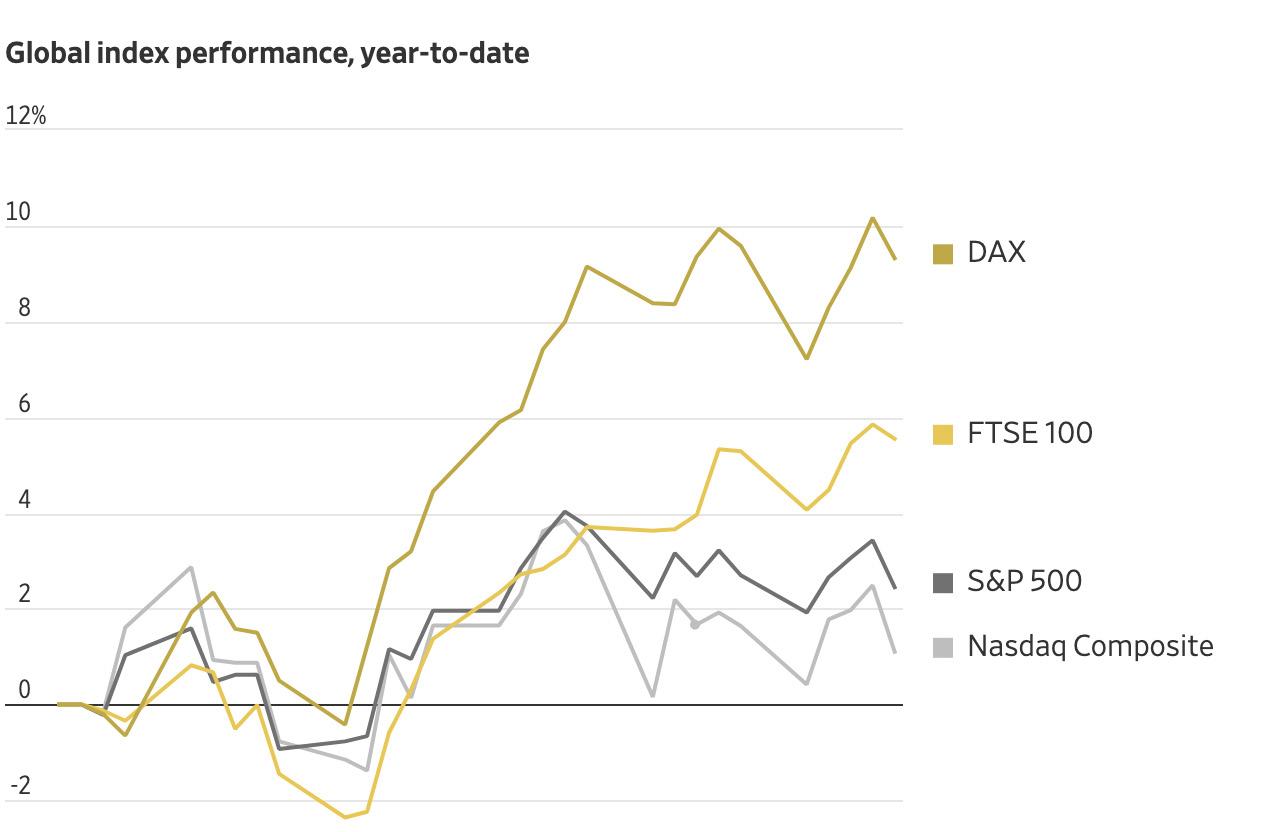
By Baruch Elmann and Emily Tarrab Editors
This past month, NASDAQ, the technology stock index, saw mixed performances as emerging service, software, and AI technologies presented both growth opportunities and risks, leaving room for some high-profile stocks to either shine or struggle.
Highlights:
Constellation Energy’s stock surged by 35%,
The company made a $26.6 billion deal to acquire Calpine, a leading natural gas and renewable energy producer. Constellation became the largest clean energy provider in the U.S. and is now leading S&P 500.
T-Mobile’s shares grew by 5.7%
After announcing a satellite service partnership with Elon Musk’s Starlink through SpaceX, T-Mobile outperformed Verizon and AT&T in the stock market, making it the top provider of mobile network services. T-Mobile expects to add around 6 million monthly bill plans, which would be roughly double the 3.1 million new monthly bill plans in 2024.
Lowlights:
Nvidia stock plunged 17% amid rising competition from DeepSeek
Market value shrinked by $593 billion, marking the largest single-day loss in Wall Street history. NASDAQ dropped 3.1% in response. DeepSeek emerged as a major challenger, offering cheaper AI chip technology.
Insurance shares tumbled following LA wildfires
Allstate droped 6%, while Chubb and the Travelers Company fell over 4%. These three insurers were ranked the biggest S&P 500 losers that Friday. The decline came in response to estimated damages of $135 to $150 billion.
Electronic Arts suffered a 19% drop, its worst since October 2018
“Dragon Age” sales fell short, attracting only 1.5 million players—half of what was expected. EA Sports FC franchise “underperformed net bookings expectations.”
Interesting Observation:
Despite European stocks being valued at $16.9 trillion compared to America’s $63 trillion in stocks, Europe’s profit margins have been higher in 2025. Europe’s STOXX 50 index fund gained 8% in January, its best monthly performance since January 2023. It outperformed America’s S&P 500 index fund by more than 5 percentage points—the widest gap since April 2022. European companies are projected to grow profits by 7.7% this year, compared to 2.6% for U.S. companies. The increased interest of U.S. investors in European stocks can be attributed to rising interest rates in the U.S, which make borrowing more expensive. This makes it harder for US companies—especially tech companies—to access funding, which leads to slower growth expectations. In addition, Europe has cut their interest rates, making investing in European stocks more enticing for American investors.
DeepSeek spooks Wall Street
By Leslie Mishaan
Contributing Writer
DeepSeek, the new Chinese AI technology, is grabbing America’s attention and has completely shifted the stock market. Its shock in the industry is due to its abnormally low development cost, at only $6 million (according to Wedbush Securities analyst Dan Ives), while OpenAi (Chat GPT), Google, and other companies cost roughly $1 trillion (according to Goldman Sachs).
Its arrival has caused many loyal investors in AI chip manufacturing companies,
Could Trump’s tariffs spark a North American trade war?
By Evan Matushansky Contributing Writer
President Donald Trump has temporarily paused his plan to impose a new 25% tariff on all imports from Canada and Mexico. While the goal of the tariff is to promote manufacturing in the United States, the implications of the tariffs have increased tension between the US and its immediate neighbors. Some estimate that the tariffs have the potential to cost the US economy over $1.2 trillion and harm smaller businesses. Higher prices for goods, supply chain disruptions, and changes in trade could shake up North America’s economy.
While these tariffs are currently paused, many are worried about their devastating potential consequences on both the economy and on foreign relations. Are these tariffs beneficial for the United States or will they lead to a trade war with serious consequences?
President Trump’s contentious relationship with both Canada and Mexico originated during his first term in office. Trump perceives that Canada maintains an unfair trade imbalance and detrimental policies toward the United States. Much of the conflict with Canada centers around perceived protectionist policies, particularly in sectors like lumber and steel, which Trump argues disadvantage American businesses.
Similarly, President Trump believes that the Mexican government maintains trade imbalances with the United States as a direct result of the North American Free Trade Agreement (NAFTA), which was replaced by the United States-Mexico-Canada Agreement (USMCA) in 2020. Those are both trade agreements between Canada, Mexico, and America that maintain zero tariffs between these countries. Trump criticizes both Canada and Mexico for benefiting from these agreements by taking manufacturing jobs away from America and allowing trade deficits to grow.
Canada and Mexico have pledged to retaliate against the 25% tariff. Despite
the recent changes under the United States-Mexico-Canada Agreement (USMCA), both countries believe that these new tariffs are a violation of the agreement. Canada has promised tariffs on U.S. imports like steel, aluminum, and agricultural products, specifically targeting pressure points between the two countries. Mexico has threatened to raise tariffs on U.S. culinary products. Both Canada and Mexico’s counter tariffs are aimed to pressure Trump into reconsidering his tariff policies. This could potentially cause a trade war and destabilize relations between the North American countries.
President Trump’s decision to impose these tariffs is part of his broader “America First” economic strategy, aimed at protecting U.S. industries and reducing the trade deficit. Through tariffs, Trump aims to make things more equitable between the North American countries. He insists these measures will encourage companies to move manufacturing back to the United States, thus boosting domestic production and creating more jobs for U.S. workers. Critics have argued that these tariffs will have an adverse effect on the U.S. economy, acting as another hefty tax on U.S. consumers, hiking up prices of essential household products.
Similarly, these tariffs harm small businesses, as many depend on imports of raw materials from our neighboring countries. Since small business owners do not have the financial flexibility to absorb higher costs, they pass these expenses to their customers, often losing them business. This inevitably leads to reduced sales and the closure of many small businesses.
Now that President Trump has paused his tariffs on Canada and Mexico, it is unclear if they are meant to serve as a negotiation tactic or if they are, in fact, meant to spur manufacturing and industry within the United States. Nevertheless, the potential economic and foreign-relations consequences could be dire. Will the new tariffs usher in a new greater America, or will they create economic and trade upheaval?
such as Nvidia and ASML, to pull out from their investments. Many people expect the demand for Nvidia chips to decrease because of the new Chinese company’s cheaper technology. Additionally, people now doubt whether they overvalued other companies, like Meta and Microsoft, who have been investing in AI. Giuseppe Sette, president of AI market research firm Reflexivity, claimed, “DeepSeek has taken the market by doing more with less; this shows that with AI the surprises will keep on coming in the next few years.”
As a result, Nvidia shares decreased 17%, losing $600 billion in value. Accord-
ing to CNBC, it is the most significant one-day loss for a company in stock market history. In addition, ASML decreased by 6%, and Broadcom decreased by 17%. So, too, energy-related stocks have decreased significantly as investors worry that the new tech could require less energy to run, translating into lower demand. For example, GE Vernova, which makes wind and gas turbines, decreased by 21%. Moreover, Vistra, the electricity generator company, decreased by 28%.
DeepSeek is a private Chinese company founded in July 2023. It was founded by Liang Wenfeng, a graduate of one of China’s top universities. Liang has about $8 billion in assets and funded the company through his hedge fund earnings. He bought a large supply of Nvidia A100
chips, a type of technology that is now banned from exporting to China. An MIT publication reported that these Nvidia A100 chips became the basis of DeepSeek. DeepSeek is a free service available on the web and app stores; it was the top download on the Apple App Store on January 25. DeepSeek differs from its competitors in that it relies on “inference-time computing,” which is a technology that uses only the necessary portions of its model for each user’s needs, saving money and computation power.
Ben Reitzes, head of technology research at Melius, told investors that DeepSeek is a breakthrough AI tool. Compared to OpenAI, DeepSeek includes better continued on page 6

Entertainment
The drama of TikTok’s final confessions
By Caroline Palacci Entertainment Editor

Earlier this year, when TikTok looked like it might be shutting down, users took the opportunity to unleash absolute chaos, revealing secrets that they decided not to take to TikTok’s digital grave. Us ing the Family Guy soundbite, “I never cared for The Godfather,” creators dropped some of the most unhinged confessions the internet has ever seen. Some were hilarious, some were downright odd, and all of them had people questioning reality. Here are some of the best (or worst?) ones that shook TikTok.
First up, in a plot twist no one saw coming, the Duolingo fandom discovered that Mark was in the Duo mascot suit the entire time. That’s right—Mark, whoever he is, was the man behind the unhinged sassy green owl haunting our language-learning nightmares.
Meanwhile, our expectations of latenight scrolls on mukbang TikTok were turned upside down when babydumplingg admitted she doesn’t actually eat all the food in her massive meals leaving fans to wonder; how much was just for the camera?
TikTok star Brooke Monk finally addressed the long-running accusations that she is “cringe” and confessed, “I understand why people called me a ‘pick-me.’”
We love self-awareness, but TikTok wasn’t sure whether to forgive or roast her harder.
Beauty TikTok had its own scandal when Meredith Duxbury —the queen of aggressively caking on 10 pumps of foundation and rubbing it in like moisturizer—revealed she did wipe some of those 10 pumps off. We all called it though, didn’t we? Those looks were just too good!
Then came the Scar Girl drama. After years of debates and deep-dive stalking, she finally admitted her scar was fake; it had healed a long time ago and she just kept drawing it back on. It’s so obvious now looking back—there’s no way it migrated that far across her face.
Finally, the dandelion crayon girl herself, La Kenzo, revealed she doesn’t actually want dandelion back. After years of comments alerting her when they found new dandelion products, fans saw the news as a betrayal; who will we congratulate now that Crayola brought dandelion back?
Overall, TikTok has been through it. Following the mass virtual confessions, TikTok was effectively banned in the United States, then brought back the very next day. But the secrets were already out. … Well, isn’t this awkward.

Black Mirror Letter of Recommendation:
By Caroline Palacci Entertainment Editor
Binge-worthy shows are hard to come by and in high demand. One of the best classic shows to binge is Black Mirror, which has shockingly flown under the radar of so many TV fans. This mind-bending sci-fi series, created by Charlie Brooker, is often overshadowed by bigger and longer running series—but it shouldn’t be. If you haven’t given Black Mirror a chance, here’s why you should.
Each episode of Black Mirror is a stand-alone story, meaning you can jump in at any point without needing to follow a long, complex plot. Every episode takes the audience into a new and different world, each more captivating than the next. The show explores the dark side of technology and human nature, and is famous for predicting eerie real-world trends long before they happen. Like a more mature version of dystopian novels like The Hunger Games, The Maze Runner, or Divergent, this show will have hearts racing and is sure to hook viewers with every storyline.
Take “Nosedive,” for example—an episode where people’s social status is determined by a rating system, eerily similar to today’s obsession with social media validation. Starring Bryce Dallas Howard, the story follows a woman desperately trying to improve her rating, only to see her life unravel as she fails to meet society’s impossible standards.
Then there’s “White Bear,” which
starts as a seemingly disorienting survival horror that leaves viewers unsettled and confused but ends with a chilling and unpredictable twist: the world of the protagonist is not as it seems. The episode critiques mob mentality and modern justice systems in a disturbingly effective and endlessly entertaining way.
Want something more suspenseful? “Metalhead” delivers a tense, nearly dialogue-free survival horror, where a woman is relentlessly pursued by a robotic dog in a post-apocalyptic world. The episode highlights the terrifying potential of technology and is sure to keep viewers on the edge of their seats.
In “Fifteen Million Merits,” starring Daniel Kaluuya, society is depicted as a dystopia where people generate power by cycling, earning merits to escape their bleak reality. The episode critiques consumer culture, reality TV, and the illusion of choice.
Finally, “Rachel, Jack and Ashley Too” features Miley Cyrus in a story about pop stardom, artificial intelligence, and corporate control. It balances dark satire with a more lighthearted, action-packed narrative.
Black Mirror doesn’t rely on overthe-top special effects but instead crafts realistic, near-future scenarios that feel disturbingly possible. With its sharp writing, especially shocking twists, and thought-provoking social commentary, this show is a must-watch.
You can stream Black Mirror on Netflix … just be ready for insane plot twists!
Accusations turn It Ends With Us into courtroom drama
By Leah Katash Entertainment Editor
The drama surrounding the movie It Ends With Us has been just as intense as the film itself. The film adaptation of one of Colleen Hoover’s bestselling novels was directed by Justin Baldoni, who was also chosen to star as Ryle Kincaid, one of the co-stars in the film. Baldoni worked alongside his co-star, Blake Lively, who was cast as Lily Bloom. While the movie was being filmed, many fans complained that Baldoni and Lively were not the right fits to play those characters. Despite the backlash from fans, they seemingly worked well together on set.
The co-stars’ relationship seemed to take a drastic turn with the release of the film, and it was apparent in the It Ends With Us press tour. Many fans were confused on why the press tour for the film was filled with a floral, girlie theme rather than the serious topic of domestic abuse that the film discusses. Additionally, while Lively made many lighthearted comments when being interviewed, Baldoni took a more serious approach. Baldoni and Lively weren’t even seen doing interviews together, and Baldoni was not present at some of the movie premieres. Some fans speculated on the stars’ relationship, but
nothing was directly addressed then.
In December, months after the film’s successful release, Lively filed a lawsuit against Baldoni, accusing him of sexual harassment. Lively claimed that Baldoni and his production company, Wayfarer Studios, created a toxic and inappropriate work environment on set. Baldoni claimed he was innocent and countersued Lively and her husband, actor Ryan Reynolds, for $400 million, accusing them of defamation.
Lively and Reynolds claimed that they tried to address the issue during filming, but Baldoni was difficult to work with. Lively claimed that Baldoni would make her uncomfortable by discussing her weight and other inappropriate topics. Tensions were high when Baldoni hired a well-known crisis manager who has represented other stars like Johnny Depp and Drake during difficult times. Baldoni’s team claimed that these allegations were false and that Lively only made these allegations because she wanted more authority over the film.
As evidence was surfacing, many fans were criticizing Lively, claiming that she was rude and unprofessional. Co-star Brandon Sklenar, who
played her character’s other love interest, was upset by the amount of hate being directed at her. Additionally, unreleased scenes were brought to light that could have been used to defend either side.
Baldoni argued that the romantic scene proved that their relationship was entirely professional, but Lively’s team claimed that she obviously looked uncomfortable.
The situation thickened when many news outlets started reporting the situ-
ation and Baldoni sued The New York Times for $250 million, stating that their reports were misleading regarding his character.
Their court battle is now set for March 2026. In the meantime, more evidence is surfacing, with viewers supporting both sides. This is not a simple feud between two stars, but a serious legal battle that could seriously damage either actor’s reputation and career.

Ask Merle
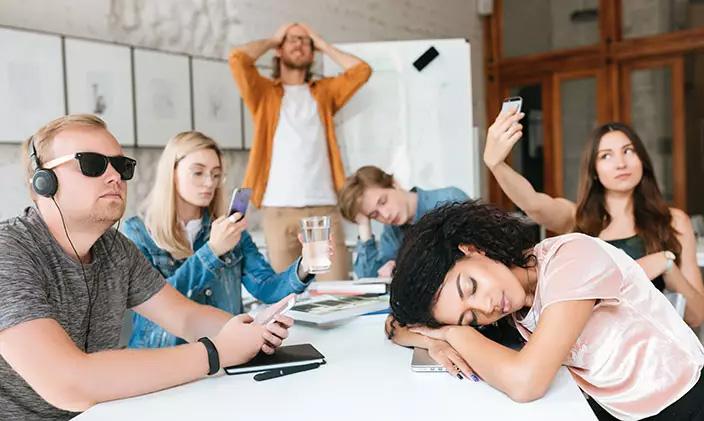
Merle,
How do I handle a group project when I’m the only one putting in any effort (without committing a crime)?
—Riding Solo
Solo,
Sorry, I don’t think I’ll be much help with this one—I’m usually the partner making you want to commit a crime. … But in all seriousness, I actually know exactly what you’re talking about, and it’s super frustrating. Most of the time, I’ll just do the majority of the work myself, but the best thing to do is speak to your teacher about the work division. If you don’t want to be a snitch, ask the teacher if they can make designated parts of the project that each person in every group is responsible for.
Merle
Fun & Games
Merle,
How do I tell my parents I failed a test?
—Failure
Failure, Easy! Don’t. JK! TBH, what I do is try to do better on the next test before telling them I did poorly. I find that fixing your mistakes before telling your parents will often make them proud of your growth rather than upset at your failure. But if this isn’t the case for you, you could also just sit them down and explain why you struggled on the exam and try to work out a plan on how to do better next time.
Merle
Merle,
What’s the best excuse for not doing my home work that won’t make my teacher roll their eyes?
—Lazy Boy
Lazy, Ummm, I don’t think there is one.
Merle
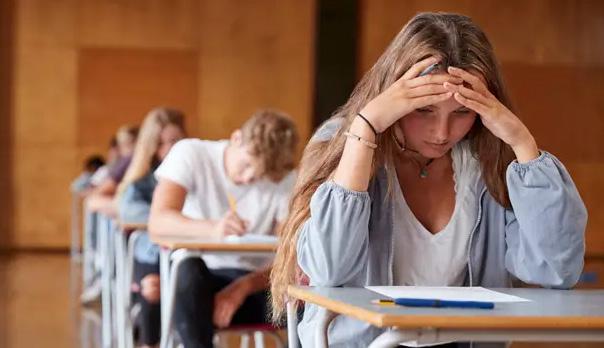
Merle,
Is there a scientific reason why my brain forgets everything the second a test starts? Asking for a friend (aka me).
—Forgetful Freshman
Forgetful,
I actually just learned this in my AP Psychology class. According to Ebbinghaus’s Forgetting Curve, memory fades quickly if information isn’t reinforced, which is why cramming often backfires. And stress and test anxiety will also interfere with recall, making your brain freeze right when you need it most. So it’s not your fault; it’s an actual psychological concept!

Dr. Merle, Clinical Psychologist
Flatbush Connections
By Margaux Lincer Fun & Games Editor
Create four groups of four!
Merle, How do I stop second-guessing every text I send like I’m writing a Supreme Court ruling?
—Overthinker
Over, I wish I could say YOLO, but I literally send 18 versions of every text to my best friend before deciding which one to send. I sent her seven versions of a text I wanted to send to my tennis instructor last week. I just wanted a lesson.
Merle
Merle,
With this new schedule, classes are way too long. How do I get through it?
—BoredofEducation
Bored, Ugh, every class feels like the longest 46 minutes of my life. I hate to be that person, but honestly just paying attention really makes the time pass. Easier said than done, but I’ve realized that the longest classes are the ones where I stare at the clock and periods seem to fly when I actually listen and participate.
Merle
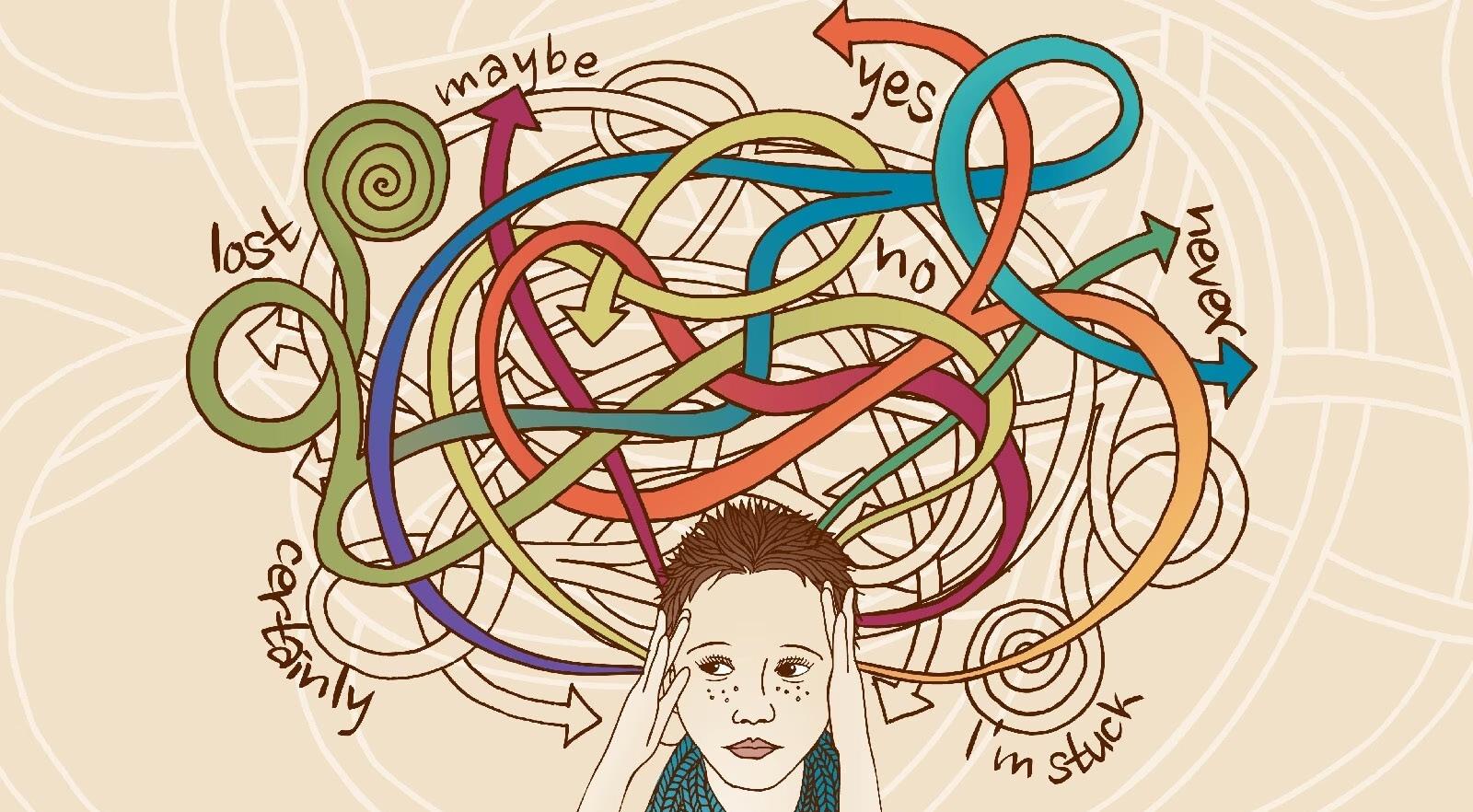
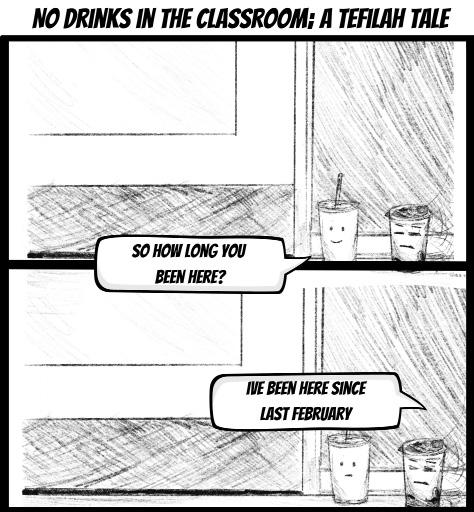
Flatbush Cartoon
By Jacqueline Tebele Phoenix Cartoonist
Standard of Fabulous Quiet luxury gets louder New makeup products oversaturating market
By Rachael Kopylov Fashion Editor
2025 is the year for unapologetic boldness—unique patterns, bright colors, prominent logos, and maximalist accessories have permeated the Spring 2025 runways. In striking contrast to 2024’s “quiet luxury,” trend, this year’s runways appear viate from the elegant and derstated looks from the Chanel’s new spring collection includes glitter, rhinestones, flowing capes, large ribbons, and bold colors. These looks were elevated with jewelry emblazoned with the brand’s “double C”


Bottega Veneta, a brand previously known for embracing quiet luxury, has pivoted to a much louder luxury, with its runway show featuring bold pieces such as a fringe-covered coat in a bold pink, mules with uniquely curved heels, and a dramatic multi-colored ruffle dress.
Brands known for their eye-catching logos and other striking features, such as Dolce & Gabbana and Versace, have spiked in popularity by over 40%, signaling a higher demand for designer clothing with loud luxury features. Celebrities including Jennifer Lopez, Taylor Swift, and Hailey Beiber have all embraced this trend. Lopez attended a Grammys after-party with a massive pink fur coat and a $3,580 crystal-covered gown, and Bieber recently went out in New York City wearing a dramatic leopard-print coat.

One brand in particular has seen an extreme boost in popularity, with a 240% increase after releasing their newest collection. Schiaparelli’s latest couture collection, named Icarus, aimed to push the boundaries of luxury fashion, and evidently succeeded. The runway show consisted of geometric silhouettes, flashy gold colors, metal hardware, feathers, glitter, and pearls, and was arguably the loudest of all the new luxury collections.
Fashion data analysts predict that 2025 will remain the year for loud luxury, whether through articles of clothing or through accessories that embolden any outfit. If the recent luxury shows have been indication, it is evident that the age of simple and understated fashion has come to an end; 2025 is embracing extravagance and is ready to completely redefine the fashion landscape.
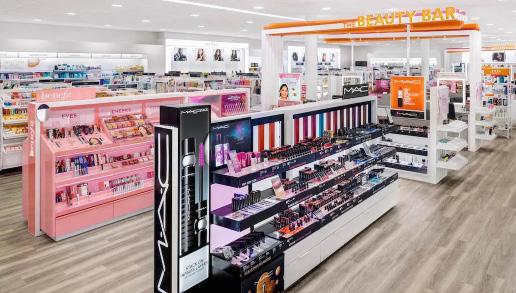
By Irene Cohen Fashion Editor
Every makeup company have been marketing their newly released products as “innovative” and “never before seen” but are they really anything different? Lately, it seems that all brands are putting out the same products and are overstaurating the market.
Hailey Bieber’s skincare line, Rhode, has come out with a Peptide Lip Liner. On the website, it is marketed as a contouring lip shaper, long-lasting and creamy, in an attempt to separate it from other lip liners. In reality, most customers are saying it’s nothing special. Every company has pushed out virtually the same lip liner, with its only difference lying in the brand name. Rhode is not an outlier.
Suddenly, no brand has a unique identity. Every brand sells the same thing with slight variations. MAC was once known for its pigmented, high-quality products, while Glossier was recognized for its minimalistic makeup. But now, they all seem
the same.
Foundations are now marketed as skin tints to make them seem like a new and innovative product even though they have been around for years. Additionally, every brand has released a long-wearing, volumizing mascara, but most do the exact same thing.
The reality is that truly new products are rare—most are just copies of existing ones with slight formula changes. Brands then use new buzzwords to market these products, trying to attract buyers. Social media has played a significant role in this phenomenon, since it is easy to see what is popular and replicate it almost exactly. Brands are rarely taking risks, but rather are looking to copy whatever is trending and will be immediately attractive to young people. The current makeup industry is so oversaturated that every brand looks identical and sells the same essentials with only slight differences. There is barely anything creative or innovative being produced and little progress is being made in the beauty landscape.
What to expect for Paris Fashion Week
By Sarah Kezra Contributing Writer
Paris, France, will be hosting the 2025 Autumn/Winter Paris Fashion Week from March 3 to 11. After a noteworthy A/W season in Milan, New York, and London, Paris has a lot to live up to. With 109 events on schedule, the unprecedented return of archival shows, and the debut of up and coming designers, this year’s round of shows is bound to be memorable. While the menswear shows took place at the end of January, fashion critics, journalists, designers, and the general public are awaiting the start of A/W Womenswear.
The Fédération de la Haute Couture et de la Mode, which governs and serves the French fashion industry, manages the technical aspects of the events each year. This year’s first show features the graduate collections of the Institut Français de la Mode, the largest fashion school in Paris, with a culmination of designs from the Institut’s emerging talent.
Not only are fresh-faced designers
being showcased in the opening show, but existing house-hold names are joining in later show dates for their Paris debuts this year, including Alaïa and Tom Ford. This year also marks the return of old archived PFW shows such as Coperni, Givenchy, and Kenzo. These shows, amongst others, are set to unveil the next A/W season’s hot colors, patterns, and overall trends.
The 2025 A/W runways will help dictate the direction of fashion trends for autumn and winter 2025-26. Based on trends found in the current New York
Fashion Week, the PFW menswear shows, and PFW Spring/Summer shows back in January, trend analysts and fashion experts are predicting a decay in fads and quick trends, and a bigger incline toward timeless, classic design.
Over the past few years, the designs on the high fashion market have been extremely dependent on the period they were designed in and very fad-focused. For example, the world has seen the intense rise of leopard print and bows infiltrate the couture space, which are styles

that are now declining in production. The Autumn/Winter shows are expected to exhibit more timeless styles that have been prevalent throughout history. These runways are not only digging deep into fashion archives, but they’ll also be representing new colors and patterns coming shoppers’ ways. After high fashion brands spent so much time focused on “quiet luxury,” the industry is reverting back to its maximalist styles and brand patterns. Part of reverting back to maximalism is veering away from monochromatic looks that were so trendy up until this point.
Designers are also said to be experimenting with interesting new silhouettes such as a cinched waist paired with a broad shoulder. Styles like this were seen in the Maison Margiela pre-fall 2025 collection, as well as in the recent NYFW Marc Jacobs show, which both help set the tone for what’s to come.
A wave of fashion news is about to hit style enthusiasts and the general public alike, so get ready for Paris Fashion Week; this year will be unforgettable.
New JV boys basketball coach finds quick success
By Stacey Gelber
Contributing Writer
This year, the Flatbush JV Boys Basketball team is led by a new coach, Daniel Nigro. Coach Nigro, who is also a physical education teacher in a New York City public school, has a long history in basketball. He started coaching because of his father, who was a community coach, and that inspired him to follow in his footsteps. Over the years, he worked his way up from high school coaching to coaching at the college level, even reaching Division 1 men’s basketball.

will help the boys in the future when they have to be workers, fathers, or even coaches themselves.
One of the main values Coach Nigro wants to teach his players is teamwork. He believes every person on the team, from the star player to the managers, has an important role. He motivates his players by partnering with them to set goals and keeping everyone focused on working together. “We set a partnership between the coaches and the players,” he explained.
The road less traveled by:
What does the path to GOAT status look like for Mahomes?
By Elliot Cohen Junior Editor
After a brutal loss in the most esteemed football game, Patrick Mahomes’ chances to be considered the greatest football player of all time is now in question. But to fully understand Mahomes, it is essential to look at the full picture.

After retiring from coaching, Coach Nigro learned about the opening at Flatbush and decided to step back into the game. He was impressed by the school, the boys, and the program, and when offered the position, he couldn’t say no. “It was too wonderful of a place to walk away from,” he said.
Coach Nigro describes his coaching style as tough but fair. He focuses on defense, fundamentals, and paying attention to details. He also believes in teaching life lessons through basketball. For example, he emphasizes the importance of being on time, being organized, and being committed to the team. These lessons, he says,
This season, the team is leading their division in first place with an impressive record of 9-1. Their only loss came early in the season, but they have been unstoppable since then. With their toughness and commitment, the team is looking forward to the playoffs and has their eyes set on winning a state championship.
While Coach Nigro wants the team to succeed on the court, he also stresses the importance of growth off the court. In the long term, he hopes to prepare the players for varsity basketball and help them become strong representatives of their community. With his experience, dedication, and positive attitude, it’s clear the Flatbush JV Boys Basketball team is in great hands this season.
When players leave NY, media is often blamed
By Elliot Cohen Junior Editor
It’s often difficult for fans to forgive a player. When a fan favorite leaves, tears pour out, curses get spewed, and jerseys get burned, regardless of the circumstances. This idea, of course, is nothing new to New York sports teams and their fans. For ages, players who have left New York have suffered lots of hate and backlash.
This offseason, 2018 second overall draft pick Saquon Barkley left the Giants in favor of a big contract from their division rivals, the Philadelphia Eagles. Barkley proceeded to become the undisputed best running back in the NFL, eclipsing 2,000 yards, nearly breaking the all-time record, and winning a Super Bowl.
Players leave New York time and time again, so is the New York bubble of sports as significant as it is made out to be? Many fans talk about “big-town media,” specifically in New York. How does this concept affect players in New York? Is the difference really substantial? Are there really players “meant for the big city?” Or is the concept overstated and overrated?
In 2017, the Jets selected Jamal Adams, a safety out of Louisiana State University. Adams’s unique style of play helped propel him to becoming one of the best safeties in the league. Adams, a free safety, did not play on the ball as most safeties did,
and frankly didn’t play much man to man. His main skill was his blitzing ability. He was often able to quickly swim past the offensive linemen and hit the quarterback hard. In 2019, Adams recorded a career year, with six and a half sacks, an unreal number for a safety.
That offseason, Adams, understanding that the Jets were not going to be making any sort of push in the near future, wanted out. He was traded by Jets GM Joe Douglas to the Seattle Seahawks in exchange for a plethora of picks and a backup safety. Just as Barkley did, Adams immediately succeeded. He finished 2020 with nine and a half sacks, a new career high, and 83 total tackles, second to only 2018’s 113. This seemed to most fans as if he was on the way to superstardom in Seattle. However, Adams did not follow the script. The coming seasons were filled with turmoil for Adams, whose performance fell off a cliff. He has recently been moving between multiple teams and free agency.
Years earlier, in 2005, the New York Yankees brought up rookie Robinson Cano, a hefty lefty second baseman. At 23 years old, the young second baseman burst onto the scene, hitting nearly .300 and being the runner up for AL Rookie of the Year. This domination continued throughout his eight-year Yankee career, with arguably his best year coming in
continued on page 6
At this moment, most football fans worldwide consider seven-time Super Bowl champion Tom Brady to be the NFL’s “GOAT,” or greatest of all time. In his 22 seasons, he only once missed the playoffs and is beyond accomplished. Brady also has the most yards, passing touchdowns, completions, Pro Bowl selections, and leads a plethora of other mind-blowing statistical categories. When Brady seemingly reached his peak, around 2016-17, many thought there would not be a quarterback to near that for ages. That was, until Patrick Mahomes came along.
The highly-doubted Texas Tech quarterback, taken as the third quarterback in the 2017 draft, sat behind veteran Alex Smith until he began his first year as a starter in 2018. He immediately became a star, winning an MVP award and leading the Chiefs to the AFC championship, being knocked out by only Brady himself. This did not deter Mahomes, as he proceeded to make four Super Bowls in the coming five years, and had a chance at the NFL’s first three-peat lined up right before his eyes.
Mahomes’ path to being the greatest football player in history was clear. If he won in New Orleans, he would easily enter the top five, being one of four quarterbacks to have four Super Bowl titles, and in his case, doing it before the age of 30. He would have found himself already hoisting two MVP awards, while Brady only acquired three over the course of 22 seasons. Mahomes would also likely have earned a fourth Super Bowl MVP award.
But in the end he fell short. Mahomes was brutally dominated by Jalen Hurts and the Eagles, losing 40-22 in a game that felt more like it was 100-3.
So what does Mahomes do from here? Is the path to GOAT status still possible? Can he still eclipse the greatness of Brady? Or is Mahomes’s window closed? Is his opportunity gone? Will he never be able to surpass Brady? Montana? Manning? Rodgers? Will he always sit at the 4th, 5th, 6th, or borderline top 10 of all time? Will he be forgotten?
Mahomes’s window is open. In fact, it has never ever been wider. Many look at Mahomes’s position now and think that his road to being the GOAT is the road not taken. They believe that Mahomes will have to beat the odds, and in order to surpass Brady, he will have to gain access to uncharted territory. In truth, the opposite is true.
Time is heavily in Mahomes’s favor. People tend to forget that Mahomes is not even 30. At this stage in his career, Brady had also been a three-time Super Bowl champion. Many forget that Brady had a 10-year Super Bowl drought, not winning the big game once between 2005 and 2015. Brady was 38 when he won it all in the 2014-15 season. Brady’s best years came at the tail end of his career, winning super bowls in 2015, 17, 19, and 21. He also won his third MVP in 2017.
So in reality, Mahomes isn’t set out on a dark and mysterious path. The trail of footsteps in front of him are the footsteps of the man’s shoes he is trying to fill. This idea of becoming the GOAT is not as far-fetched as fans make it seem. Similar to Mahomes, Brady, in a season with 16 wins, was the expected champion, but was suddenly dethroned by an NFC East team, whose quarterback had an incredibly clutch game. Mahomes finished the season with “only” 15 wins, but was also expected to reign victorious and was similarly beaten by an NFC East quarterback. The similarities are there. These are two of the best players ever, and in the end we may see a new name on top.
The path will not be easy. Firstly, Mahomes will have to beat out the winningest quarterback ever. Additionally, from a critical standpoint, these quarterbacks are very different. Brady’s late career spark may be completely unmatchable. Throughout his career, Brady was known as an incredibly accurate pocket passer, specifically in the midrange, as well as being a great leader. It were these attributes which allowed him to surge late in his career, even as the NFL developed around him.
Mahomes, on the other hand, is an incredible deep-threat passer whose greatest skill is getting outside the pocket. As a quarterback gets older, he may become increasingly immobile. This may present a problem in the future, as Mahomes’s speed is often what translates to his wins. This season, although he garnered 15 wins, we saw Mahomes take a step back statistically. If this pattern continues, he will have trouble finding a late-career surge. The beauty of Brady’s playstyle was that it did not require him to be mobile, only to be accurate, which was far easier to keep consistent as he grew older. Mahomes may find trouble doing this, which may translate to a drop off, and an inability to earn GOAT status.
However, Mahomes is a winner. He has never not made an AFC Championship game. This is even more ridiculous than it sounds, as the AFC has been incredible for as long as time can tell. Mahomes can do it, but he must take the road not taken.
